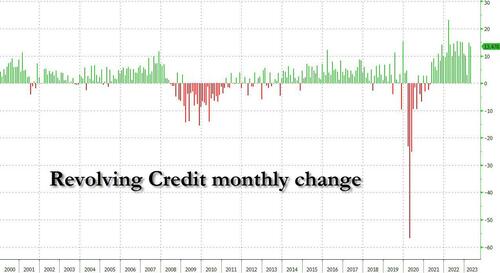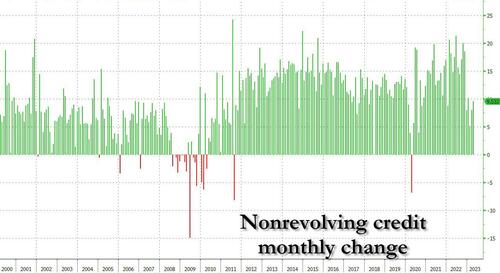Back in 1995, Bryan Range pleaded guilty to fraudulently obtaining $2,458 in food stamps by understating his income. He returned the money, paid a $100 fine and $288 in court costs, and served three years of probation.
Although Range did not realize it, that Pennsylvania misdemeanor conviction also came with a lifelong penalty: Under federal law, he lost the right to own firearms. That disability, the U.S. Court of Appeals for the 3rd Circuit ruled yesterday in Range v. United States, is inconsistent with the constitutional right to keep and bear arms.
The 3rd Circuit applied the test that the Supreme Court established last year in New York State Rifle & Pistol Association v. Bruen, which rejected a state law requiring that residents demonstrate “proper cause” to carry guns in public for self-defense. When a gun control law restricts conduct covered by the “plain text” of the Second Amendment, the Court said, the government has the burden of demonstrating that it is “consistent with this Nation’s historical tradition of firearm regulation.” The 3rd Circuit’s 11–4 decision is the first en banc federal appeals court ruling to reject a gun restriction under the Bruen test, which cast doubt on the constitutionality of many firearm regulations.
“We hold that the Government has not shown that the Nation’s historical tradition of firearms regulation supports depriving Range of his Second Amendment right to possess a firearm,” Judge Thomas M. Hardiman writes in the majority opinion. “Because the Government has not shown that our Republic has a longstanding history and tradition of depriving people like Range of their firearms, [it] cannot constitutionally strip him of his Second Amendment rights.”
The Firearms Policy Coalition (FPC), which filed a brief supporting Range’s case, welcomed the decision. “For nearly three decades, Mr. Range has been unjustly denied his Second Amendment rights,” Joseph Greenlee, director of constitutional studies at the FPC Action Foundation, said in a press release. “We’re thrilled that Mr. Range’s rights have been restored, and about the decision’s potential implications for countless others who have been wrongfully disarmed.”
The ruling highlights the injustice of a federal law that makes it a felony, punishable by up to 15 years in prison, for broad classes of “prohibited persons” to own guns. In Range’s case, the relevant restriction, 18 USC 922(g)(1), prohibits gun possession by anyone convicted of a crime, violent or not, that is punishable by more than a year of incarceration. While that usually means a felony conviction, the disqualification also applies to state offenses classified as misdemeanors if the maximum penalty exceeds two years.
Although Range was not sentenced to jail or prison, his crime was punishable by up to five years in prison, which meant he was no longer allowed to buy or own a firearm. When he tried to buy a deer-hunting rifle in 1998, he failed the background check.
Range figured that must have been a mistake. His wife bought him a rifle, then bought him another after the first one was destroyed in a house fire. Range later tried again to buy a gun but was again turned away. That prompted him to look closely at the federal prohibition, commonly but misleadingly described as applying to “felons.”
After discovering he was a “prohibited person” even though he had not been convicted of a felony, Range sold his hunting rifle to a gun dealer. But for the federal prohibition, he says, he would have kept the rifle and might also have bought a shotgun for home defense.
In 2021, before Bruen, a federal judge rejected Range’s claim that his disqualification violated the Second Amendment. Applying the two-step analysis that had been endorsed by the 3rd Circuit but was later rejected in Bruen, the district court concluded that Range’s conviction made him an “unvirtuous citizen,” which it said meant the Second Amendment did not apply to him. The court therefore did not proceed to the second step, which would have entailed weighing the burden imposed by Section 922(g)(1) against its purported benefits.
Last year, a three-judge 3rd Circuit panel upheld that decision under the Bruen test. Prohibiting Range from owning a gun was “consistent with this Nation’s historical tradition of firearm regulation,” it said, because his conviction “places him outside the class of people traditionally entitled to Second Amendment rights.” Yesterday’s opinion rejects that conclusion.
The government argued that Range has no Second Amendment rights because he is not part of “the people” whose “right to keep and bear arms” it protects. “The right to bear arms has historically extended to the political community of law-abiding, responsible citizens,” it said.
In the landmark Second Amendment case District of Columbia v. Heller, the Supreme Court did refer to “law-abiding citizens.” It said the amendment “does not protect those weapons not typically possessed by law-abiding citizens for lawful purposes.” And it upheld “the right of law-abiding, responsible citizens to use arms in defense of hearth and home.” But the Court also recognized that the phrase “the people,” which appears in the First, Fourth, Ninth, and 10th amendments, as well as the Second, “unambiguously refers to all members of the political community, not an unspecified subset.” According to Heller, that language creates a “strong presumption” that the right to arms “belongs to all Americans.”
Since Heller did not address the question at issue in Range’s case, Judge Hardiman says in the 3rd Circuit opinion, its reference to “law-abiding, responsible citizens” is not binding. Nor is it clear what that phrase means. “Does it exclude those who have committed summary offenses or petty misdemeanors, which typically result in a ticket and a small fine?” Hardiman asks. “No. We are confident that the Supreme Court’s references to ‘law-abiding, responsible citizens’ do not mean that every American who gets a traffic ticket is no longer among ‘the people’ protected by the Second Amendment.”
What about more serious offenses, such as felonies? The problem with that reading, Hardiman says, is that it empowers the government to strip individuals of their constitutional rights based on how legislators decide to classify an offense. “At root, the Government’s claim that only ‘law-abiding, responsible citizens’ are protected by the Second Amendment devolves authority to legislators to decide whom to exclude from ‘the people,'” he writes. “We reject that approach because such ‘extreme deference gives legislatures unreviewable power to manipulate the Second Amendment by choosing a label.'”
After concluding that the Second Amendment presumptively applies to Range, Hardiman asks whether prohibiting him from owning a gun is nevertheless supported by longstanding historical precedent. He concludes that the government, which under Bruen had the burden of making that case, failed to do so.
“Nothing in our opinion should be taken to cast doubt on longstanding prohibitions on the possession of firearms by felons,” the Supreme Court said in Heller. But Hardiman notes that federal laws restricting gun rights based on criminal convictions are of relatively recent vintage, and the earliest version, the Federal Firearms Act of 1938, “applied only to violent criminals.” In 1961, Congress expanded the ban to cover nonviolent crimes punishable by more than a year in prison. “We are confident that a law passed in 1961—some 170 years after the Second Amendment’s ratification and nearly a century after the Fourteenth Amendment’s ratification—falls well short of ‘longstanding’ for purposes of demarcating the scope of a constitutional right,” Hardiman says.
Reaching further back, the government cited laws that it said showed “legislatures
traditionally used status-based restrictions” to disarm people. Hardiman notes that “restrictions based on race and religion now would be unconstitutional under the
First and Fourteenth Amendments.” In any case, he says, the fact that “Founding-era governments disarmed groups they distrusted,” including “Loyalists, Native Americans, Quakers, Catholics, and Blacks,” does “nothing to prove that Range is part of a similar group today.”
The government also noted that “founding-era felons were exposed to far more severe consequences than disarmament,” including the death penalty. But the fact that “Founding-era governments punished some nonviolent crimes with death does not suggest that the particular (and distinct) punishment at issue—lifetime disarmament—is rooted in our Nation’s history and tradition,” Hardiman writes. “The greater does not necessarily include the lesser: founding-era governments’ execution of some individuals convicted of certain offenses does not mean the State, then or now, could constitutionally strip a felon of his right to possess arms if he was not executed.”
Unlike the situation under current federal law, Hardiman notes, a felon who was not executed could recover his right to arms “after successfully completing his sentence and reintegrating into society.” Similarly, “Founding-era laws often prescribed the forfeiture of the weapon used to commit a firearms-related offense without affecting the perpetrator’s right to keep and bear arms generally.” Again, that is different from the lifetime ban imposed on Range, who did not commit a crime involving a gun. In short, Hardiman says, “the Government’s attempt to disarm Range is not ‘relevantly similar’ to earlier statutes allowing for execution and forfeiture.”
In a concurring opinion, Judge David J. Porter argues that Section 922(g)(1) represents the exercise of a power that Congress was never granted. “Until well into the twentieth century, it was settled that Congress lacked the power to abridge anyone’s right to keep and bear arms,” he writes. “Even without the Second Amendment, the combination of enumerated powers and the Ninth and Tenth Amendments ensured that Congress could not permanently disarm anyone.”
Judge Thomas L. Ambro also wrote a concurring opinion, joined by Judges Joseph A. Greenaway and Tamika Montgomery-Reeves. They emphasize that “the Government’s failure to carry its burden in this case does not spell doom for §922(g)(1).” That provision “remains ‘presumptively lawful,'” they say, because “it fits within our Nation’s history and tradition of disarming those persons who legislatures believed would, if armed, pose a threat to the orderly functioning of society.”
Since “Range does not conceivably pose such a threat,” Ambro writes, the majority is correct to reject Section 922(g)(1) as applied to him. But the decision “speaks only to his situation, and not to those of murderers, thieves, sex offenders, domestic abusers, and the like.”
By contrast, dissenting Judge Patty Shwartz, joined by Judge L. Felipe Restrepo, worries that the majority’s “analytical framework” implies that “most, if not all, felon bans” are unconstitutional. Since “the Supreme Court has made clear that such bans are presumptively lawful,” that is a bridge too far for Shwartz and Restrepo. In a separate dissent, Judge Cheryl Ann Krause argues that Section 922(g)(1) “comports with traditional principles that have guided centuries of legislative judgments as to who can possess firearms.”
Although the 3rd Circuit’s decision is limited to that provision’s application in this particular case, Shwartz and Restrepo probably are right to worry about the implications of demanding “relevantly similar” historical precedents, as Bruen requires. Even before that decision, Supreme Court Justice Amy Coney Barrett, in a 2019 dissent as a judge on the U.S. Court of Appeals for the 7th Circuit, questioned the historical pedigree of the “wildly overinclusive” category that included Range.
In that dissent, which Hardiman cites in Range, Barrett was quoting UCLA law professor Adam Winkler. But she endorsed his view, concluding that a mail fraud conviction could not justify lifelong disarmament. History “demonstrates that legislatures have the power to prohibit dangerous people from possessing guns,” she wrote. “But that power extends only to people who are dangerous.”
In 2020, 3rd Circuit Judge Stephanos Bibas echoed Barrett’s position, dissenting from a panel decision that upheld Section 922(g)(1) on the grounds that Second Amendment rights are limited to “virtuous” citizens. That case involved a woman who was sentenced to three years of probation for lying on her tax returns. Bibas argued that “the historical touchstone” for disarming felons is “danger, not virtue.” Bibas joined Hardiman’s majority opinion in Range, which quotes his warning about the hazards of granting legislators “unreviewable power to manipulate the Second Amendment by choosing a label.”
Patrick Wyrick, a judge on the U.S. District Court for the Western District of Oklahoma, expressed a similar concern this year, when he concluded that the federal ban on gun possession by cannabis consumers is unconstitutional. “A legislature could circumvent the Second Amendment by deeming every crime, no matter how minor, a felony, so as to deprive as many of its citizens of their right to possess a firearm as possible,” he wrote. “Imagine a world where the State of New York, to end-run the adverse judgment it received in Bruen, could make mowing one’s lawn a felony so that it could then strip all its newly deemed ‘felons’ of their right to possess a firearm.”
Wyrick posed that very hypothetical to the government’s lawyers. “Remarkably,” he said, “when presented with this lawn-mowing hypothetical argument, and asked if such an approach would be consistent with the Second Amendment, the United States said ‘yes.’ So, in the federal government’s view, a state or the federal government could deem anything at all a felony and then strip those convicted of that felony—no matter how innocuous the conduct—of their fundamental right to possess a firearm.”
Ambro wants to make it clear that the Second Amendment allows Congress to disarm “murderers, thieves, sex offenders, domestic abusers, and the like.” But as Congress saw it, “the like” included Range and many other nonviolent offenders who have never done anything to indicate that their possession of firearms would be a menace to public safety. Post-Bruen, the unavoidable question is the extent to which legislators can be trusted to make such judgments.
The post Disarming a Man Based on a Nonviolent Misdemeanor Was Unconstitutional, the 3rd Circuit Rules appeared first on Reason.com.
from Latest https://ift.tt/UEpvkIz
via IFTTT










